This document discusses the use of articles, quantifiers, and determiners in English. It explains that these words provide information about nouns and are used before nouns. The document then examines specific uses of articles like a, an, and the; quantifiers like some, any, many, and much; and determiners like this, those, each and every. Examples are provided and exercises are included for the reader to practice using these grammatical elements correctly.
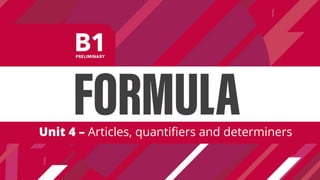
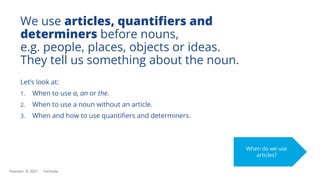
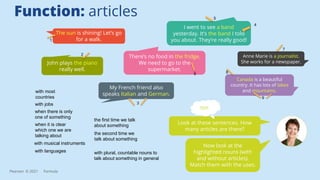

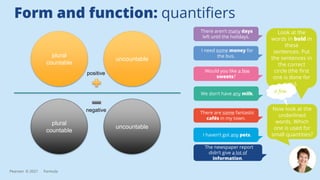
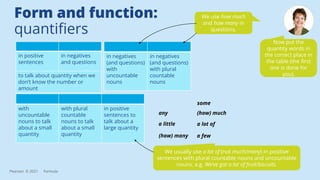

![1. When I was younger I wanted to be…………footballer, but now I’m learning…………guitar. I want to be in…………band.
2. A: Do you like…………rock music? B: No, I prefer…………hip hop.
2. Alex went on a trip to…………Paris last year. He saw…………Eiffel Tower and visited…………Pompidou Centre.
2. A: How can you speak…………English so well? B: I have a good friend from…………USA and we speak it all the time.
2. Do you want to have…………apple or…………banana with your lunch?
Practice activities
Complete the gaps using a/an, the or no article.
a
Pearson © 2021 Formula
the a
a
an
the
the the
[-] [-]
[-]
[-]
Choose the best options to complete the sentences.
1. A: There isn’t some/any bread. B: Yes, there is. I bought some/any this morning.
2. This guidebook has much/a lot of practical travel advice.
2. There are a few/a little seats left on the flight, but not many/much.
2. I didn’t spend much/many money while I was studying because I found a lot of/any cheap places to shop.](https://image.slidesharecdn.com/articlesandquantifiers-221206135806-a6dc4a6e/85/Articles-and-Quantifiers-pptx-8-320.jpg)